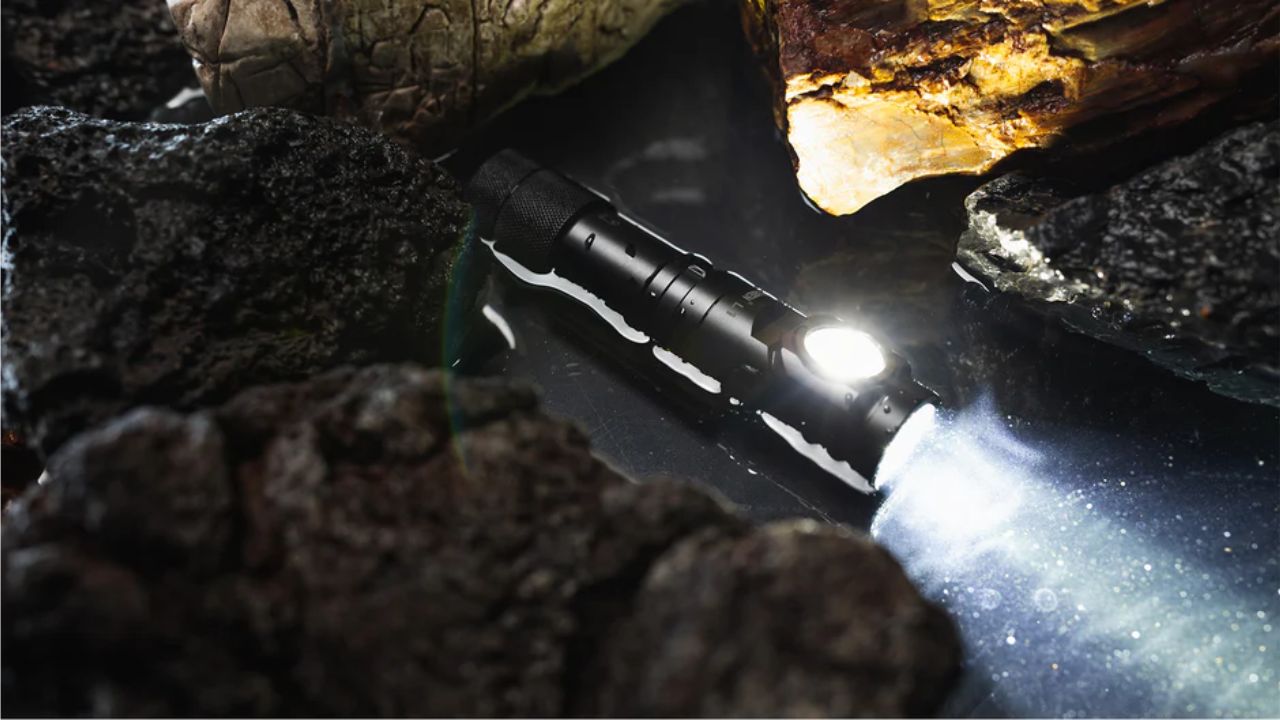Tactical flashlights are valued for their ability to work as a long-lived, bright, and versatile tool. People, including the police, armed forces, hunters, campers, and others who encounter potentially dangerous situations, depend on flashlights for self-protection, moments of crisis, and other adventures, respectively.
As these flashlights are most useful in moments when visibility is severely limited, it is essential to know how long they can operate. In this article, we will explore more facets concerning the life expectancy of tactical flashlights and strategies for how users can prolong the life of their flashlights.
How Long Do These Flashlights Last?
Tactical flashlights’ life span can be influenced by factors such as the type of batteries, quality of LED, type of materials used in construction, and frequency of use. LEDs of high quality usually come with conditions of use of over 50,000 to 100,000 hours of operation, which is well over any standard decade usage. A rechargeable battery is good for about 300 up to 500 charge cycles, five to ten years per week for recharging. Also, the duration of percussive flashlights is not fixed and depends on the product model, as some tactical lights can last up to 170 hours or more. Nonetheless, flashlights with a higher candela output are brighter than those with a lower candela output and tend to utilise more power, reducing run time. Especially the battery, regular cleaning, and correct storage methods will help these long-lasting tools have a longer life span.
Factors Influencing Tactical Flashlight Longevity
Battery life
The type of battery used is one of the key considerations that define how long a tactical flashlight can last. The vast majority of tactical flashlights are either battery-powered, where you can use a lithium-ion battery, or use readily available disposable batteries like AA or AAA. The rechargeable battery types can be used for hundreds of cycles of charging and discharging, but with each cycle, their ability to hold the charge is reduced. For instance, a high-quality 18650 lithium-ion power bank battery that can store 3.7 volts should last approximately three hundred to five hundred charge cycles, or if recharged weekly, it should be able to last up to five to ten years. Alkaline batteries are readily available for use through replacement but prove relatively expensive and not friendly to the environment in the long run.
Perhaps the choice between rechargeable and disposable batteries ultimately depends on the user’s preference and frequency of use.
LED lifespan
LED is the main light source in most tactical flashlights, and its life cycle is indicated in hours. High-quality LEDs can be efficient for up to 50,000-100,000 hours or more than ten years in normal usage. Nevertheless, specific parameters may influence this estimate, such as the flashlight’s working temperature, drive current, and usage characteristics.
Build quality
Tactical flashlights are specially designed to work in extreme conditions and rough handling. Materials like Anodized aluminium or stainless steel make a vital contribution in this respect. A good flashlight can withstand numerous years of heavy usage on the hands of people who rely on them. However, cheaper models made from cheaper materials will likely not have the same lasting power.
Usage environment
As with any product, the circumstances of a tactical flashlight's use can significantly influence its durability. High heat, humidity, or contact with abrasive materials may ruin its parts. High-quality tactical flashlights are either water-resistant or waterproof, and most of them can endure certain impacts but may not be durable under some circumstances.
Strategies Which You Should Apply to Ensure That Tactical Flashlights Last Longer
1. Proper battery maintenance
If the flashlight employs rechargeable batteries, you need to adhere to the manufacturer's instructions for timely charging and storage. Do not charge the battery beyond its capacity and remove it once it is fully charged to prevent it heating up. As for the disposable batteries, use fresh ones and replace them when the flashlight is drained to avoid leakage that can damage the flashlight.
2. Regular cleaning
Regular cleaning of the flashlight is also recommended after every use. The user should wipe it with a soft, dry cloth. In a more detailed washing process, the batteries should be detached, and a weak soap solution and some water should be used to clean the surface of the device. Before putting the flashlight in its proper working condition, ensure it is moisture-free.
3. Storage
When not in use, mount the tactics flashlight in a cool and dry place to avoid moisture. Another tip is to remove the batteries whenever the flashlight is not used for a while because if the batteries leak, this will affect small internal components in the flashlight.
4. Check for damage
The part of the flashlight that requires frequent examination for any signs of damage includes the lens for cracks, the components for tightness, and the battery compartment for corrosion. These issues might be fixed so that they do not complicate the situation and affect the flashlight's use, which will help increase its lifespan.
Conclusion
It is not easy to determine the lifespan of any tactical flashlight because this will depend on factors like batteries, LEDs, build material, and surroundings. The LEDs used and the body construction is all built to last, typically between 5-10 years, but your ability to maintain and take care of the flashlight adds to its longevity. There are some guidelines that one can need to follow in order to keep their tactical flashlights serving them for many years.


